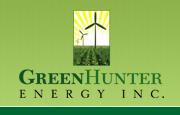 The world’s largest producer of camelina is fast becoming the biggest producer of a non-food feedstock for biodiesel.
The world’s largest producer of camelina is fast becoming the biggest producer of a non-food feedstock for biodiesel.
This press release from Great Plains – The Camelina Company says it has several crushing partners in North America, helping it produce more than 10 million road miles of camelina biodiesel to date… and the company plans to bump that up to 100 million gallons by the year 2012:
The U.S. Energy Bill signed at the end of 2007 increases the Renewable Fuels Standard (RFS) to 36 billion gallons by 2022. But, with the rising cost of consumer goods, this mandate has come under fire recently as the primary reason land is being used to grow crops for fuel instead of for food production. Camelina offers a solution for reaching this biodiesel production goal by providing a sustainable, low-input biofuel feedstock option that does not interfere with food production. Camelina is virtually 100 percent efficient. It can be harvested and crushed for oil and the remaining parts can be used to produce high quality omega-3 rich animal feed, fiberboard and glycerin.
Camelina does not take away from land currently being utilized for food production because it has the ability to grow on marginal land utilizing very little moisture. Camelina also fits into many farming operations as an excellent rotational crop to break the cycle of continuous small grains cropping. Even more important to some growers, camelina has been shown to enhance the yield of subsequent crops such as wheat by up to 15 percent.
Great Plains started commercial camelina production three years ago, paying growers in North America to grow the oil seed. After 10 years of research into camelina, Great Plains has developed higher-yielding, higher oil-content camelina varieties… just in time to feed the current boom in the biodiesel market.


 Jefferson City, MO-based board has a new building on the east side of the city in an area that has undergone some massive renovations over the past couple of years. The good folks at NBB will hold a press conference and open house between 10 am and noon at their new location at 605 Clark Avenue in Jefferson City.
Jefferson City, MO-based board has a new building on the east side of the city in an area that has undergone some massive renovations over the past couple of years. The good folks at NBB will hold a press conference and open house between 10 am and noon at their new location at 605 Clark Avenue in Jefferson City. High performance and great gas mileage don’t have to be exclusive, as British-based Trident Performance Vehicles proves with its Iceni two-seater sports car.
High performance and great gas mileage don’t have to be exclusive, as British-based Trident Performance Vehicles proves with its Iceni two-seater sports car.

 Under the energy section, the platform states that we “must continue to develop alternative fuels,
Under the energy section, the platform states that we “must continue to develop alternative fuels, According to the
According to the 


 The
The  The corn growers are also trying to get the word out that they are capable of meeting the nation’s needs for food, feed and fuel by bumper sticker. While supplies last, they are offering free bright yellow bumper stickers that proclaim “US Farmers – Producing Food, Feed and Fuel” to anyone who wants to help them get that message out on the road. For a sticker, email NCGA at corninfo@ncga.com.
The corn growers are also trying to get the word out that they are capable of meeting the nation’s needs for food, feed and fuel by bumper sticker. While supplies last, they are offering free bright yellow bumper stickers that proclaim “US Farmers – Producing Food, Feed and Fuel” to anyone who wants to help them get that message out on the road. For a sticker, email NCGA at corninfo@ncga.com.